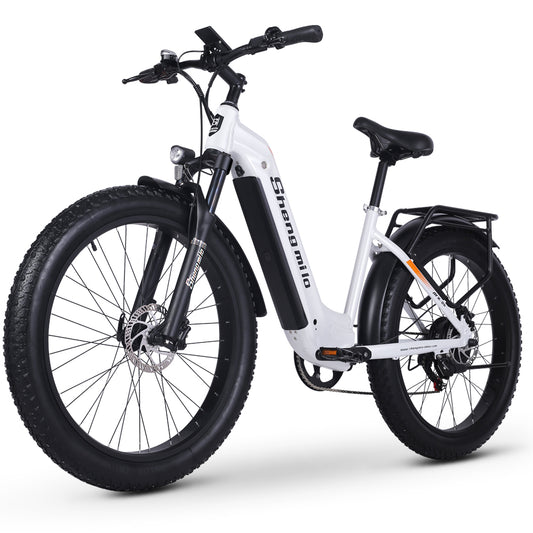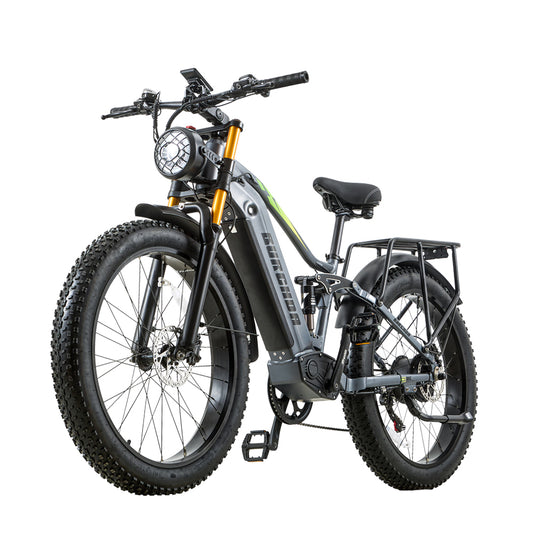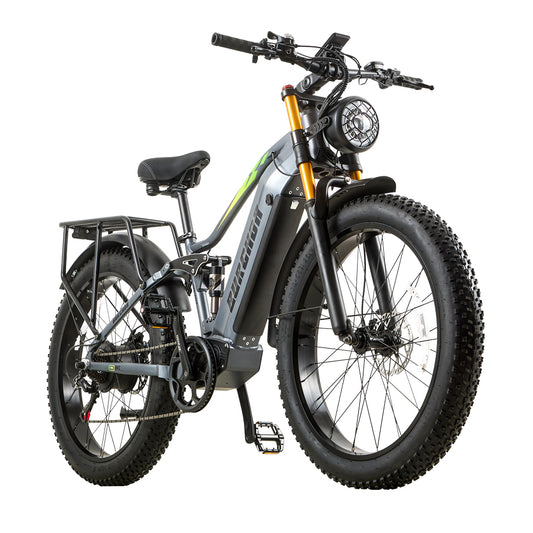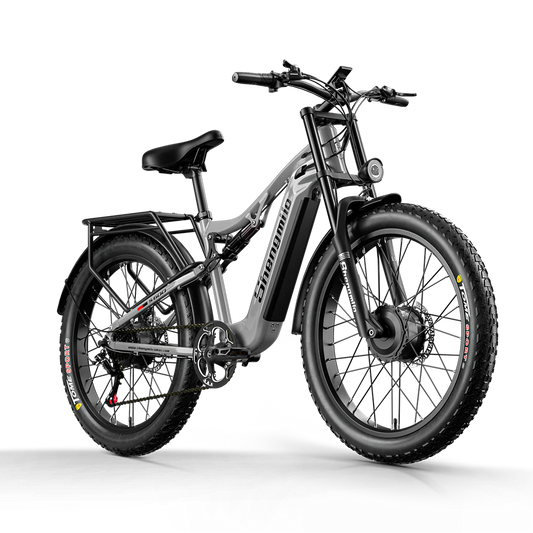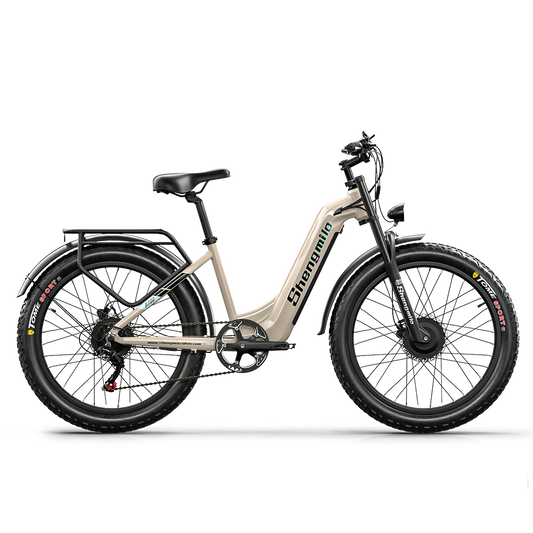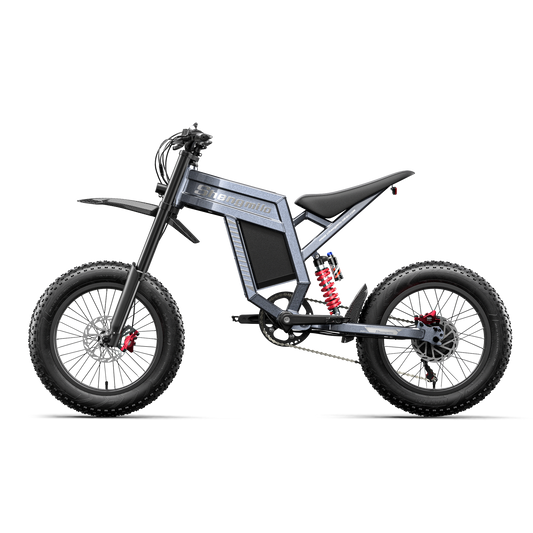If you like riding bicycles and you also want to enjoy motor power to help you reach further and conquer more types of places, you may want to consider buying a mountain e-bike, such as those from brands like shengmilo, burchda, langkeleisi, and others.
So do you know the requirements for riding an e-bike on public roads in Europe?
Two main categories of e-bikes
Before we get into the details of the e-bike rules, let's first understand the two main categories of e-bikes.
1. Bicycles with electric pedal assist
Pedal-assisted e-bikes are equipped with pedal assist. They have a motor that kicks in when the pedals are activated and assists the cyclist while riding. This type of e-bike does not require insurance or road tax.
2. Electric assisted mopeds
On the other hand, electric mopeds are self-propelled electric bicycles. They have a motor that runs when the bike pedals are not moving. This category requires insurance, payment of vehicle tax, and a license plate.
Two types of electric mopeds are suggested below.
E-bikes: E-bikes are electric bicycles, also known as pedal electric assist bicycles. They have a constant power of 250 watts and a speed limit of 25 kilometers per hour.
S-Pedelec: S-Pedelec is a high-speed e-bike that provides pedal assistance. These e-bikes do not turn off the motor at a maximum speed of 25 km/h, but only when it reaches 45 km/h. These e-bikes require you to wear a helmet and have a registered driver's license, and then pay taxes and insurance.
Types of e-bikes publicly allowed on European roads
In European countries, certain regulations for e-bikes must be followed. Here are some of the regulations that help determine which e-bikes can be ridden on European roads:
The motor speed must not exceed 250W.
Motor protection must also function at a maximum speed of 25 km/h.
The motor must stop when the cyclist stops pedaling.
Helmet and age requirements
In European countries, the requirement for e-bike riders to wear a helmet is not part of the e-bike law. Although helmets are not required, they are recommended because they help prevent head injuries.
Also important is the age limit when riding the bike. For weaker bikes with motors of less than 250 W, most municipalities require a minimum age of 14 to 15 years; however, in Belgium and Switzerland, the minimum age is over 16 years.
E-bike regulations in European countries
Different European countries have different laws regarding e-bikes. Some of them are listed below.
1. Electric Bicycle Law in Austria
Austria's e-bike law includes the following regulations:
- Maximum speed of 25 kilometers per hour and drive power of 600 watts.
- The motor of an e-bike can only be switched on when pedaling.
- If possible, the driver should use the bicycle lane.
- Trailers may be used to transport children.
- The minimum age for riding an e-bike is 12 unless you purchase a bicycle license.
- Wearing a helmet is recommended but not mandatory.
- E-bikes must have an EU declaration and CE marking.
- The drinking limit is 0.8.
2. E-bike law in Belgium
Belgium's e-bike regulations are quite lenient. Three types of e-bikes are allowed.
- 250W e-bikes with a maximum speed of 25 km/h are suitable for all ages and do not require a helmet.
- 1000W e-bikes with a speed limit of 25 km/h are known to be motorized bicycles with an age limit of at least 16 years and a certificate of conformity. Helmets are not required.
- 4000 W e-bikes are so-called high-speed e-bikes and their drivers must comply with moped regulations.
3. French e-bike law
E-bike riders must strictly observe three basic rules:
- E-bikes may not exceed 250 W. Once the speed limit is exceeded, it is called a speed bike.
- Pedal assist must be switched off at speeds above 25 km/h.
- The pedal assist only works when the cyclist is pedaling; when he stops pedaling, the pedal assist must also stop.
- French e-bike legislation is very strict and non-compliance is severely penalized.
4. German e-bike legislation
German e-bike legislation requires compliance with the following requirements.
- The motor assist is active when you pedal and at speeds of up to 25 km/h. The motor assist is not active when you pedal.
- In addition to the EU declaration, smart e-bikes sold in the EU require the CE marking.
- The minimum age of the driver is 15 years.
E-bike Certification Required by the European Union
Consumer protection is imperative, so e-bikes must be certified by RoHS, CE and FCC. CE certification is a mandatory requirement and helps to meet health, safety and environmental requirements.
Customs in European countries check for CE certification when transporting e-bikes, and e-bikes without this certification are prohibited from being sold on the market.
The importance of complying with e-bike laws in European countries cannot be denied and it is important to familiarize yourself with them. Understanding e-bike laws is essential to ensure you comply and stay safe while riding. Therefore, the above guide can help you understand these laws and provide detailed insights into the legality of e-bikes. If you are looking for an e-bike with CE marking for use in Europe, you may want to consider the e-bikes offered by Shengmilo. Understanding e-bikes and the laws will help you make better choices and enjoy a hassle-free riding experience in Europe.
Also, whether you are riding on public transportation roads or on your own property, or outdoors in the mountains, you must take care to protect yourself and a reliable helmet is a must.
When there are other cars and pedestrians on the road, you should control your traveling speed, not exceeding 25km/h, to avoid hurting the pedestrians or causing injuries to yourself.


